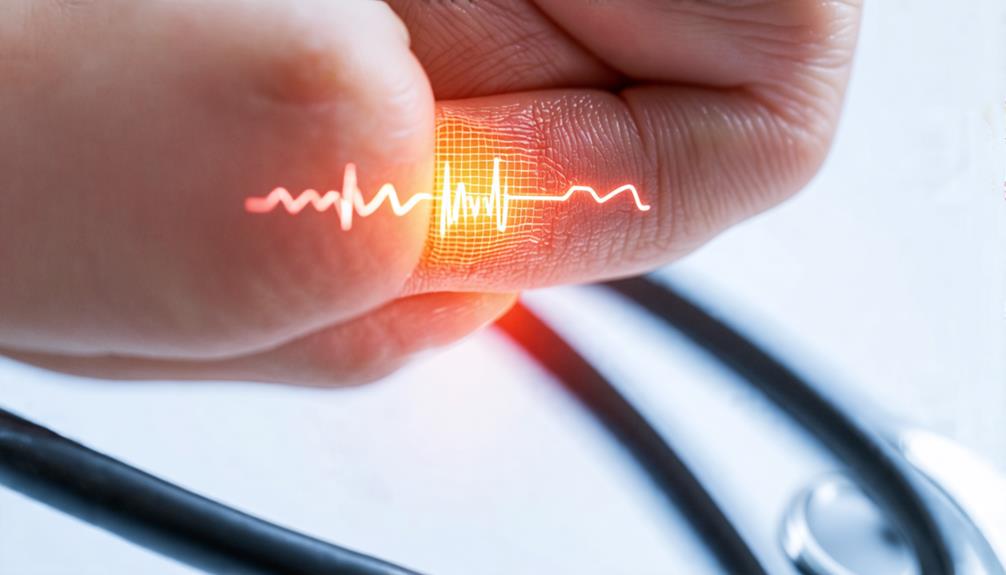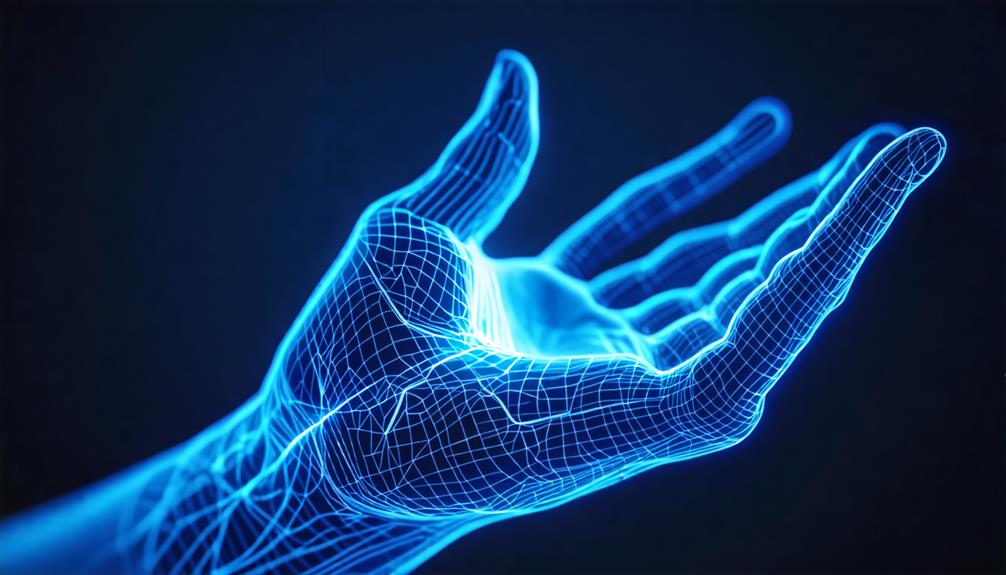You might not have realized it, but your thumb has its own unique pulse. This distinctive heartbeat, courtesy of the Princeps Pollicis artery, isn't just a quirky anatomical fact—it's a reflection of your thumb's essential role in human evolution and daily life. While doctors don't typically check your thumb for important signs, this specialized pulse can offer valuable insights into your cardiovascular health. Understanding the significance of your thumb's pulse opens up a fascinating exploration of human anatomy, medical diagnostics, and the intricate design of our bodies. What other secrets might your hands be hiding?
Key Takeaways
- The princeps pollicis artery, a branch of the radial artery, supplies blood to the thumb.
- Thumbs have a unique pulse due to the arterial flow from the princeps pollicis artery.
- The thumb pulse evolved over millions of years, enhancing manual dexterity and cognitive development.
- Medical professionals often avoid using the thumb pulse for health assessments due to potential complications.
The Princeps Pollicis Artery

Your thumb's unique pulse stems from the princeps pollicis artery, an essential branch of the radial artery that supplies blood to this important digit. This specialized blood supply contributes considerably to your thumb's sensitivity and functionality. The princeps pollicis artery's presence allows for independent movement of your thumb, setting it apart from other fingers.
When you feel your thumb's pulse, you're sensing the flow through this artery. This can sometimes complicate traditional pulse assessments typically done at the wrist or neck.
For medical professionals, understanding the anatomy of the princeps pollicis artery is critical when evaluating your circulatory health. They use this knowledge to identify potential conditions affecting your thumb.
Evolutionary Significance of Thumb Pulse
Over millions of years, the evolution of a distinct pulse in human thumbs has played a crucial role in our species' remarkable manual dexterity and cognitive development. The princeps pollicis artery in your wrist provides this unique pulse, setting your thumb apart from other fingers. This anatomical significance has granted you evolutionary advantages that a handful of other animals share.
Your opposable thumbs allow you to grip things with precision, enabling tool creation and manipulation. This ability has likely contributed to your cognitive growth and complex cultural evolution. Here's how thumbs have impacted human development:
| Impact | Benefit |
|---|---|
| Tool Use | Enhanced survival |
| Multitasking | Improved communication |
| Manual Dexterity | Advanced problem-solving |
The thumb's pulse and its evolutionary significance have certainly shaped your quality of life, allowing for intricate tasks and potentially influencing language development through multitasking abilities during communication.
Medical Implications and Considerations

While the thumb's unique pulse has shaped human evolution, it also presents distinct challenges and opportunities in medical practice. You might be surprised to learn that your thumb's pulse can complicate circulatory health assessments.
Here are four key points to reflect on:
- The princeps pollicis artery gives your thumb its own pulse, which can interfere with accurate readings.
- Medical professionals prefer using index and middle fingers for pulse checks to avoid this issue.
- Variations in thumb pulse can indicate underlying vascular conditions, providing valuable insights.
- Thumb pulse assessment is useful for evaluating blood flow to the hand and distal extremities.
Understanding these medical implications is vital for accurate cardiovascular evaluations. When measuring pulse, it's important to use proper technique and take into account the thumb's unique characteristics.
Conclusion
You've learned about the unique pulse in your thumb, driven by the Princeps Pollicis artery. This distinct feature isn't just a quirk; it's a reflection of your thumb's vital role in human evolution and daily function.
Next time you're idle, try feeling for your thumb's pulse. It's a reminder of the complex circulatory system that keeps you going and the importance of regular cardiovascular check-ups.
Don't overlook this small but significant aspect of your health.

Leave a Reply